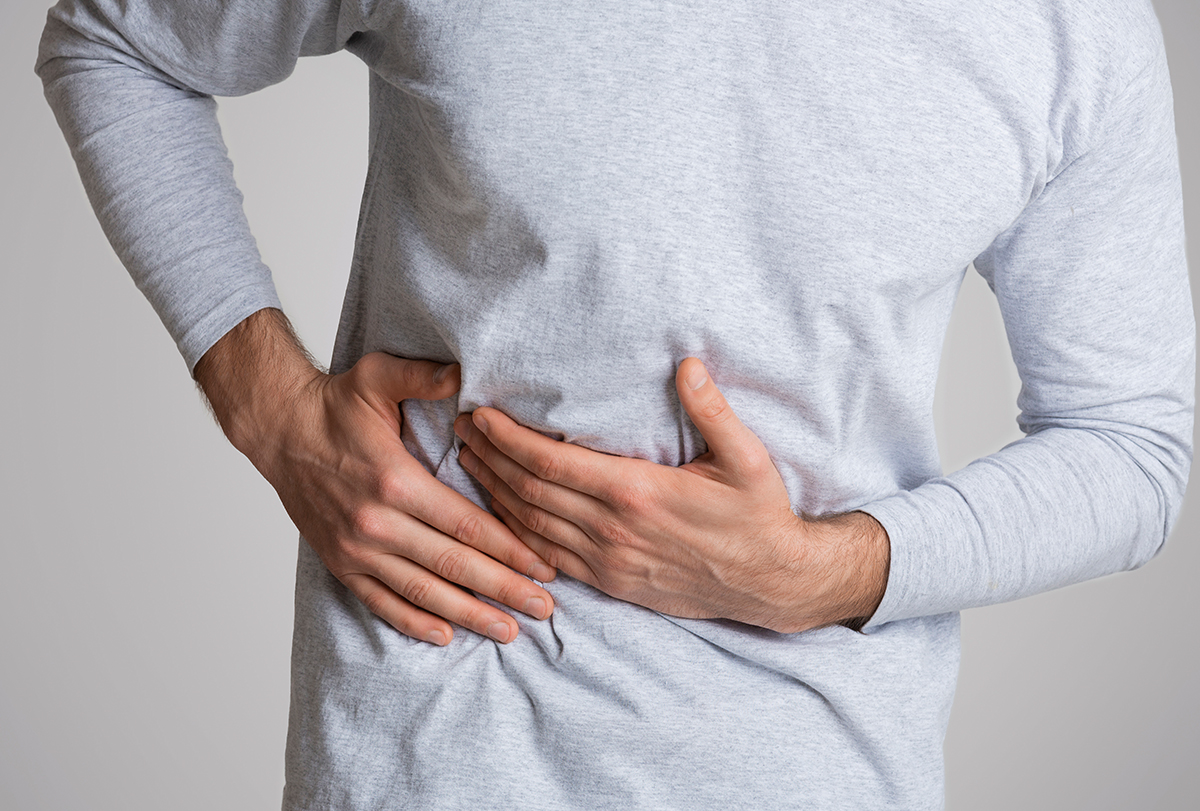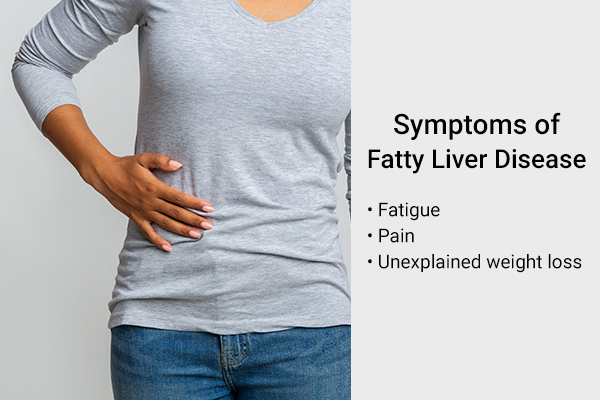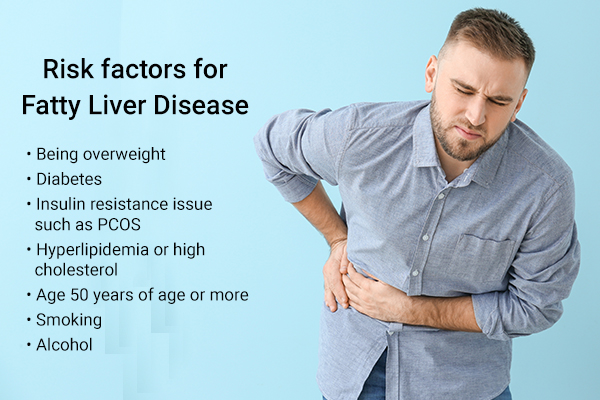In this article:
The liver is an essential organ required for normal body function. Hepatocytes, or the parenchymal cells of the liver, are responsible for most metabolic functions in the liver.

The liver performs hundreds of different functions in the body. Its primary function involves cleansing the blood of toxins and excreting them in the bile. It also helps metabolize drugs into usable forms. (1)
Fatty liver disease is a condition that occurs when there is excessive accumulation of fat in the liver. Over time, it can affect liver function and lead to liver damage.
Excessive alcohol consumption can lead to a condition called liver cirrhosis, which also causes fat deposition in the liver but is different from fatty liver disease. (2)
Types of Fatty Liver
Nonalcoholic fatty liver disease (NAFLD) is a common condition that affects nearly 25% of the world’s population. It causes a deposition of excessive fat in the liver.
NAFLD can lead to a more severe condition called nonalcoholic steatohepatitis (NASH), which causes inflammation, liver scarring, and liver damage. (3)(4)
NAFLD is usually found in people who are suffering from metabolic syndrome, obesity, hyperlipidemia, etc. (5)
Causes Behind Fatty Liver Disease
Regularly consuming high-calorie and fatty foods will cause a buildup of fat in the liver.
Fatty liver disease is also commonly found in people suffering from metabolic conditions such as diabetes, glycogen storage disorder, hyperlipidemia, and obesity. Alcohol abuse, malnutrition, etc., may also be a factor for some people.
Yet, at times, people may develop hyperlipidemia without having any of these conditions.
Certain medications are also known to contribute to fatty liver disease, for example, tamoxifen, and methotrexate. (6)
From a scientific point of view, fatty liver disease occurs when there is an increased amount of free fatty acids delivered to the liver or decreased synthesis of these fatty acids by the liver. (4)
Symptoms of Fatty Liver Disease

Fatty liver disease is known as a “silent disease” as a lot of people with the condition do not develop any symptoms.
However, in some cases, NAFLD can develop into NASH, which is a serious condition and can cause many symptoms such as:
- Fatigue
- Pain
- Unexplained weight loss (2)
Treatment Modalities for Fatty Liver Disease
Nonalcoholic fatty liver disease is a global issue affecting many people around the world nowadays. Treatment for NAFLD usually revolves around controlling any underlying metabolic disorders, reducing weight in overweight patients, and dietary modifications.
Your doctor may prescribe some medications depending on your condition. In some cases, bariatric surgery is advised for patients with morbid obesity. (7)
The main goal of treatment revolves around getting rid of the causes of liver disease. This includes regulating lipid levels and blood sugar levels. (8) Common medications proven to be effective include thiazolidinediones, metformin, metronidazole, and vitamin E.
A fairly new drug, known as Saroglitazar has been proven to be beneficial in treating nonalcoholic fatty liver disease. (9)
Home Remedies for Fatty Liver Diseases
Here are a few home remedies you can try for fatty liver disease.
1. Sip on a cup of green tea
Green tea helps you burn fat and optimizes metabolism in the body. It is filled with catechins and other anti-inflammatory compounds that help decrease inflammation in the liver. (10)
How to use:
You can drink a couple cups of green tea in a day for best results.
2. Consume amla
Amla is rich in vitamin C and other antioxidants. (11) It also contains a phytonutrient called quercetin, which helps burn fat cells and improves digestion. It is a traditional Ayurvedic remedy for many inflammatory conditions.
How to use:
- Grind one amla with a little bit of water in a blender.
- Strain this juice and add some warm water to it.
- Drink this detox drink once a day.

3. Give turmeric a try
Turmeric contains a natural anti-inflammatory compound called curcumin. Curcumin is an antioxidant that helps treat inflammation in the body and may also increase fat absorption to prevent fat accumulation. (12)
How to use:
- Add 1–2 a teaspoon of turmeric to a glass of warm water.
- Drink this mixture once a day for best results.
4. Consume apple cider vinegar
Apple cider vinegar (ACV) is a very effective natural remedy for fatty liver disease. It is a detoxing agent that can help flush out toxins and decrease fat accumulation in the liver. It also helps lower cholesterol levels, decrease inflammation, etc.
How to use:
- Add 1 tablespoon of ACV to a cup of warm water.
- Drink this mixture on an empty stomach every morning.
Diagnosing Nonalcoholic Fatty Liver Disease
NAFLD is usually diagnosed by a blood test called liver function test (LFT). It can also be spotted during an ultrasound scan of the abdominal area.
Your doctor may prescribe some more tests to rule out hepatitis infections and other liver disorders. CT scans, MRI scans, or a liver biopsy is also advised at times. (13)
“Ballooning” in the liver and inflammation are classic signs of NAFLD used for diagnosis. (14)
Most doctors may suspect an NAFLD diagnosis based on the following risk factors: obese or overweight body, type 2 diabetes mellitus, high lipid content in the blood, or an abnormal liver function test.
Prevention and Reversal of Fatty Liver Disease
There are no medical treatments to cure fatty liver disease per se, but here are a few tips you can use to manage it:
- Lose weight – safely. Try to lose weight safely and steadily (no more than 1 kilogram per week).
- If you have high cholesterol, try to reduce it with diet or medication.
- Quit drinking alcohol
- Get your blood glucose levels in control (if you are diabetic).
- Exercise regularly and eat a balanced diet.
Risk Factors for Fatty Liver Disease

You’re at an increased risk of NAFLD if you: (13)
- Are overweight or obese
- Are diabetic (type 2 diabetes)
- Have an insulin resistance issue such as polycystic ovary syndrome (PCOS)
- Have hyperlipidemia or high cholesterol
- Are above 50 years of age
- Smoke or drink
Questions to Ask Your Doctor
Here are a few questions you can ask your doctor:
- What is the best possible course of treatment?
- What are some complications of the condition?
- Do I need to make dietary modifications?
- What exercises can I do?
Most-Asked Questions About Fatty Liver Disease
Is it possible to reverse fatty liver disease?
Yes. The liver has the potential to heal itself. Implement dietary modifications, reduce weight, and quit smoking or drinking to help your liver heal itself.
Does being fat increase the chances of fatty liver disease?
Yes. Being overweight is a major risk factor for nonalcoholic fatty liver disease.
Final Word
Fatty liver disease can be mild in some people but show severe symptoms in others. Symptoms of the condition may include constant nausea, abdominal pain, and indigestion.
It is important to remember that this condition is largely influenced by lifestyle and diet, and modifying them may help reverse nonalcoholic fatty liver disease.
- Was this article helpful?
- YES, THANKS!NOT REALLY


